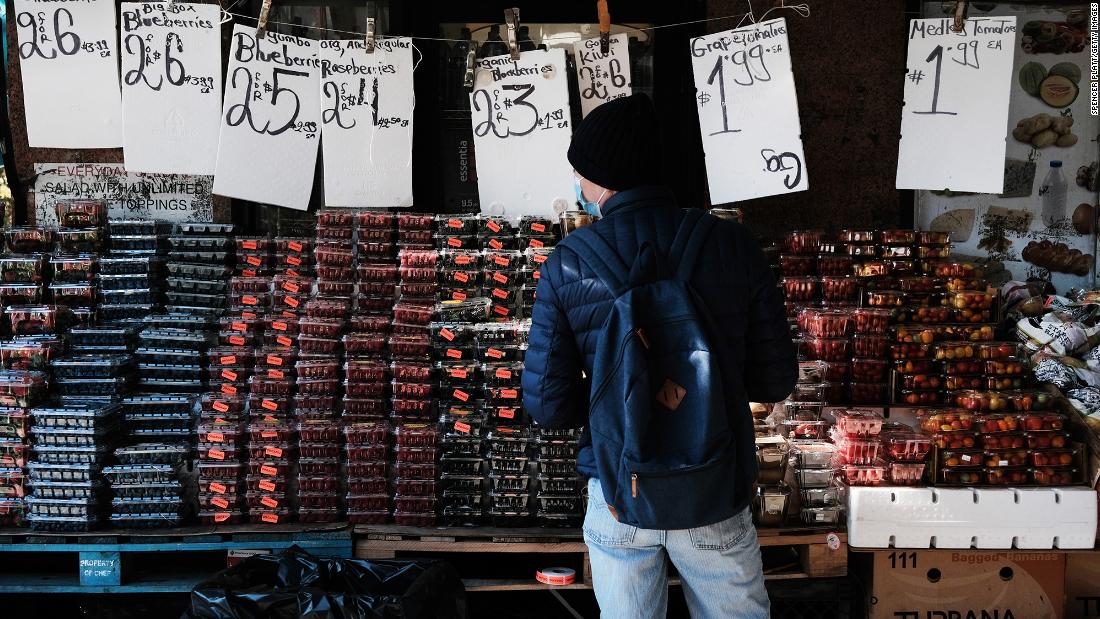Prices are up. Goldman Sachs says they will go even higher
“The inflation overshoot will likely get worse before it gets better,” the bank’s economists wrote in a research report.
Like much of Wall Street and the Federal Reserve, Goldman Sachs had been anticipating high prices would swiftly come back to earth. Now, there is a realization that inflation will be sticking around longer as supply struggles to keep up with surging demand.
Due to “prolonged” supply-demand imbalances, soaring wages and rising rent amid the housing boom, inflation metrics will remain “quite high for much of next year,” Goldman Sachs conceded.
That’s bad news for Americans struggling with the high cost of living, as well as businesses squeezed by shortages and rising prices. Low-income families and those living on a fixed budget are hurt the most by rising prices on necessities like gas, food and clothing.
Instead, nearly two-thirds of Americans described the economy as poor in a poll released last week. Nearly half expect the economy to get worse in the next year.
30-year high for inflation
The Fed has now changed its tune on inflation, acknowledging that high prices won’t go away anytime soon.
“We see shortages and bottlenecks persisting into next year, well into next year,” Fed Chairman Jerome Powell told reporters during a press conference last week. “We see higher inflation persisting.”
Everyday Americans seem to agree.
The Fed watches these surveys closely because expectations of high inflation can change consumer and business behavior, creating a self-fulfilling prophesy.
The good news is that Goldman Sachs says its core view remains that supply-demand imbalances will “largely work themselves out, leaving inflation near the Fed’s goal.” That jives with what Powell has said in recent weeks.
“We do not think that aggregate demand is on an unsustainable trajectory or that inflation expectations have become unanchored, and the overshoot should therefore ultimately prove transitory,” Goldman Sachs economists wrote in the report.
In other words, the Fed likely won’t need to slam the brakes on the economy to fight inflation through sharp interest rate hikes.
Risks tilted towards more, not less, inflation
Still, Goldman Sachs expects core PCE inflation to rise from the current 30-year high of 3.6% to 4.4% by the end of 2021. The Fed’s preferred inflation metric is expected to eventually cool off to 2.3% at the end of 2022 and 2.1% at the end of 2023.
Likewise, core consumer prices are expected to remain in the mid-5% range for “much of the winter,” before easing to 4% next summer and 3.2% at the end of 2022, Goldman Sachs said.
That’s well above the Fed’s 2% goal and may keep anxiety about the economy high.
As Powell said during his press conference, there remains vast uncertainty over the inflation outlook. No one can say for certain when prices will get back to normal.
“The risks to our forecast are probably tilted to the upside,” Goldman Sachs acknowledged.
![]()


